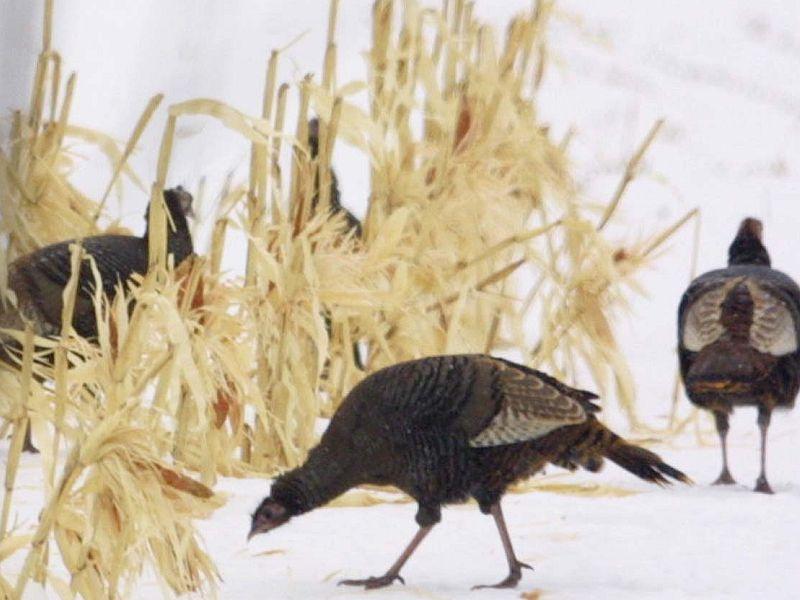http://r20.rs6.net/tn.jsp?f=001xFrQ7bwlnzVIEbfPxmwxXAIVuGEyTvrIQ5vWF5g-z-IacfaxqMdgSQMpR_czMOtQa0UNkpLNQigf9AggeWmBPPHppyTc7ltnBg4NrS3HlMzOtk-zl3kXaLWQQB-NE91lJK5Aieh_WuI2poTFRlvF--ZmowRYGxWoSP06YdFFn5TCO0dvX9p4ypbmuZdRGcFSfW4rqgY1KOSBwCJtkkVcJsHW3HTtqgZn8MaqVoGlCQe_zybsoREkHA==&c=IQlYaKTN-oLcOaTEUQQ1QdOVhGrBWuRDrAfAcprdyISdEGolorxPXA==&ch=DfIGSYhYIFqPcchbeuhgrHCml30MbDeEodR5V0t7PlBI33f9z0cRdg==
It's Salad Days For Vermont's Wild Turkeys
By JANE LINDHOLM & RIC CENGERI • MAY 2, 2017

Wild turkeys were once extirpated from the Vermont landscape because of over-hunting and loss of forest land. Now they number somewhere between 50,000 and 60,000.
It all started with the introduction of 31 wild turkeys in Pawlet and Hubbardton. Today, they can be found all around the state.
Turkey roosting in tree to avoid the snow
Turkey roosting in tree to avoid the snow
Doug Blodgett, wildlife biologist at the Vermont Fish and Wildlife Department, discusses the efforts that led to the rebound in their population and the habits of the wild turkey.



No comments:
Post a Comment